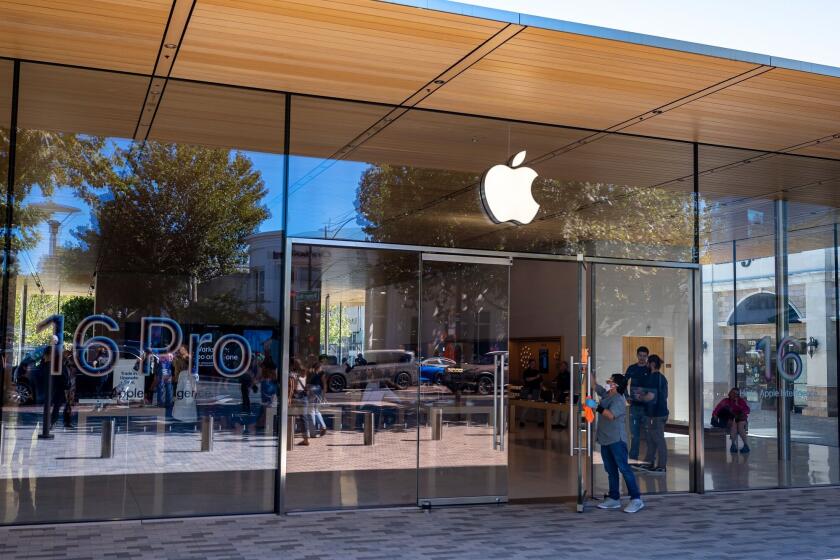Walmart wants to put groceries in your refrigerator while you’re out
- Share via
Walmart Inc. already sells more food than anyone else. Now, it wants to put those groceries right into your fridge.
Beginning this fall, about 1 million people in Pittsburgh, Kansas City, Mo., and Vero Beach, Fla., will be able to get cereal and celery while away from home. Walmart workers — sporting wearable cameras — will arrive in company-owned cars and unpack the food in customers’ kitchens.
“Once we learned how to do pickup well, we knew it would unlock the ability to deliver,” Chief Executive Doug McMillon said in a statement. “What if we not only cover the last mile to customers’ homes, but even the last few steps?”
The service, dubbed Walmart InHome, will be led by Bart Stein, who joined the retailer last year and had been working inside the company’s Store No. 8 incubator on a project code-named Franklin. The effort follows a small pilot program Walmart conducted two years ago in California with smart-home provider August Home, which used workers from startup Deliv to handle the in-home deliveries.
Amazon wants a key to your house. I did it, and I regret it »
Fees and other details of the new service, such as what smart-home hardware would be required, were not disclosed. Walmart currently charges as much as $9.95 for home delivery, which it offers in more than 100 metro areas, with an additional 200 coming on board this year.
Real-time consent
Employees who deliver the food could be paid a premium, but the approach shouldn’t cost Walmart much more than existing fulfillment methods, the company’s U.S. e-commerce CEO Marc Lore said Thursday.
One thing Lore and Stein were clear about: Delivery staff won’t enter any home without that customer’s real-time consent, transmitted through its shopping app. Customers can then watch the delivery happen remotely through the employee’s wearable camera, and can also choose to get food delivered to their garage rather than the kitchen.
“The camera will have to be streaming before access is granted,” Stein said. “In our pilot testing, we were concerned about trust. But one delivery can turn someone from a skeptic into a believer.”
Customers can also leave unwanted items that they want to return to Walmart for the driver, who will bring them back to the store.
The new service, which was tested in Lore’s home state of New Jersey, will keep a lid on expenses by bundling deliveries and not spending much time in each home, Lore said.
“From a cost perspective, it’s not all that different,” Lore said at a media event in Walmart’s hometown of Bentonville, Ark.
Moving fast
Separately, Walmart said Thursday that it would work with a Palo Alto technology startup called Gatik to test autonomous deliveries this summer in Arkansas. Earlier this year, Arkansas’ state Legislature passed a bill — backed by Walmart — to allow self-driving cars on state highways.
At a store in Rogers, Ark., Gatik displayed three autonomous delivery vans: two Ford Transit Connect small vans and a full-size Ford Transit van. Its delivery service for Walmart will be based on a “hub and spoke” system, where Gatik’s vehicles will transport packages from a large warehouse to a smaller pickup spot closer to customers.
The vehicles will travel on fixed routes and won’t be outfitted with a human safety driver, Gatik CEO Gautam Narang said.
More to Read
Inside the business of entertainment
The Wide Shot brings you news, analysis and insights on everything from streaming wars to production — and what it all means for the future.
You may occasionally receive promotional content from the Los Angeles Times.










